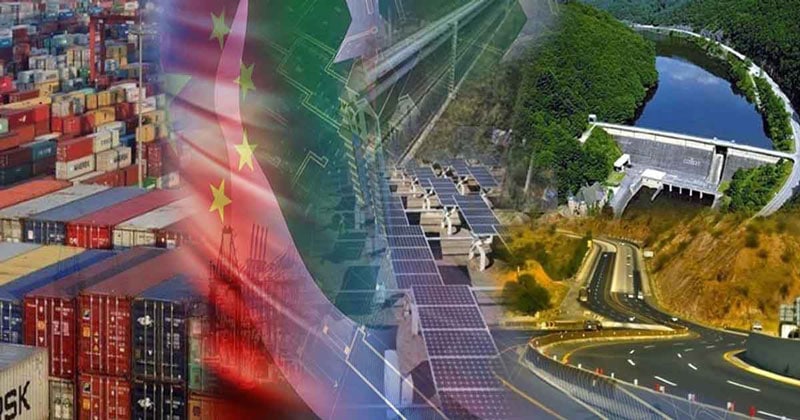The Chinese BRI is moving steadily despite the emerging global geopolitics curbing footprints of geo-economics and in search of dominance and hegemony destroying prospects of sustainable development around the globe. Even the world power stage is in the line of fire because of many emerging socio-economic, geopolitical and geostrategic whims & wishes eroding the international trading system, disturbing global supply chains and imminent imposition of sanctions would be a disaster for economic globalization and international cooperation.
The West constantly encircling China which is at its peak in Asia Pacific, South Asia, Middle East, Central Asia and many other parts of the world. Even daily naval hide & see, deployment of ballistic missiles, formation of military alliances, holding of joint martial drills, arming the Philippines and Taiwan all indicate the emergence of a new flash point in the region. Thus BRI’s trans-regional connectivity, socio-economic integration, national capacity building, digitalization and modernization have now become a new negative zones therefore the policy makers of China should revisit their policies of internationalism, sustainable development and global connectivity during 2025.
Even safety and security have become a daunting task for the easy and smooth sailing of the BRI and CPEC projects demands a complete overhauling of the prevailing conditions of investments, joint ventures, engagements and productivity. Initially, policy coordination at strategic level should be started as soon as possible and afterward new formation of corridors of safety & security would be game changers.
Comparative studies reveal till December 2024, the BRI cooperation has registered unprecedented growth transforming states, societies and systems building bridges of mutual trust, better understanding and win-win befitting propositions and mega projects around the globe. The increasing tally of the BRI reaching to 150 vividly reflects its economic importance removing seas of poverty gearing towards greater prosperity in all the member countries.
The BRI trans-continental connectivity has already connected Asia, Middle East, Central Asia, Africa, Europe, Latin America and many other parts of the world and the China-Europe freight-train network witnessing departure of the 100,000th trips from Southwest China’s Chongqing Municipality in November 2024 is commendable.
The Chinese President Xi Jinping has already chalked out a new grand strategy during the recently held fourth symposium on Belt and Road construction in Beijing by stressing comprehensively advancing high-quality cooperation under the Belt and Road Initiative (BRI). It is indeed a new chapter in the further development of BRI in the days to come. Thus concrete efforts should be initiated to gear up Chinese massive modernization, openness, digitalization, qualitative industrialization, green transformation, hybrid agriculture, hydrogen power generation, lithium batteries, EVs and last but not least human capital in Asia, Central Asia, Africa, Middle East and other parts of the world.
It seems that the Chinese three pronged policies of connectivity shifting from hard to soft and forming heart connections around the globe should be further enhanced through building a human community with a shared future, which is a core principle that continues to resonate strongly with the Global South countries. “This vision is one of the key reasons for the Global South’s active participation in the BRI.
Under the BRI framework, China has coordinated with partner countries to build critical infrastructure such as roads, railways, power plants, and ports, while also funding community-focused projects like hospitals and schools and increasing empowerment of women. These sincere efforts reflect China’s strong commitment to high-quality development and its significant contributions to global progress which should be the mantra of its global outreach during 2025 and beyond.
So far, China has signed BRI cooperation documents with more than 150 countries and over 30 international organizations. Data from the Ministry of Commerce showed that by the end of 2023, Chinese companies had established 17,000 overseas enterprises in countries participating in the BRI, with direct investment exceeding US$330 billion.
In summary, apparently world is rapidly changing because of many overlapped socio-economic contradictions, new rules of commerce, connectivity, parameters of productivity, designs of innovation and last but not least, new whims & wishes there is high time that policy makers of China should fully activate Xi’s global initiatives of development, security and civilization to counter the onslaught of the western geopolitics trying to change the geometry of geo-economics in the world. Thus China and other BRI partner countries should join hands to overcome those challenges and effectively address the impact of geopolitical conflicts.
Moreover, the dawn of Trumponomics 2.0 would be a great threat to derail the existing international trading system through the imposition of a flurry of new tariffs suffocating the countries of Global South and scapegoating many countries in Asia Pacific and Africa winning the ongoing Us-China Trade War.
Unfortunately, the China-Pakistan Economic Corridor (CPEC), a flagship BRI project, faced significant challenges in 2024, including terrorist attacks that disrupted its progress and strategic importance. Despite these obstacles, China’s economic cooperation with Pakistan remains steadfast, reflecting resilience in their partnership. To address such challenges, China should engage regional and global experts in applied economics, branding, media and foreign policy to counter baseless Western narratives about debt sustainability and environmental impacts.
Strengthening the BRI’s inclusivity and fostering trust with the Global South is crucial. Projects must focus on security, stability, sustainability and long-term partnerships to enhance economic resilience. Technological and AI collaboration should be prioritized through the Belt and Road Science, Technology and Innovation Cooperation Action Plan. Additionally, implementing the Green Investment Principles and supporting the BRI International Green Development Coalition will advance green infrastructure, energy and finance.
The BRI must drive high-quality, sustainable development, delivering meaningful benefits to member countries by improving standards, boosting investment efficiency and enhancing resilience in global supply chains during 2025 and beyond.










